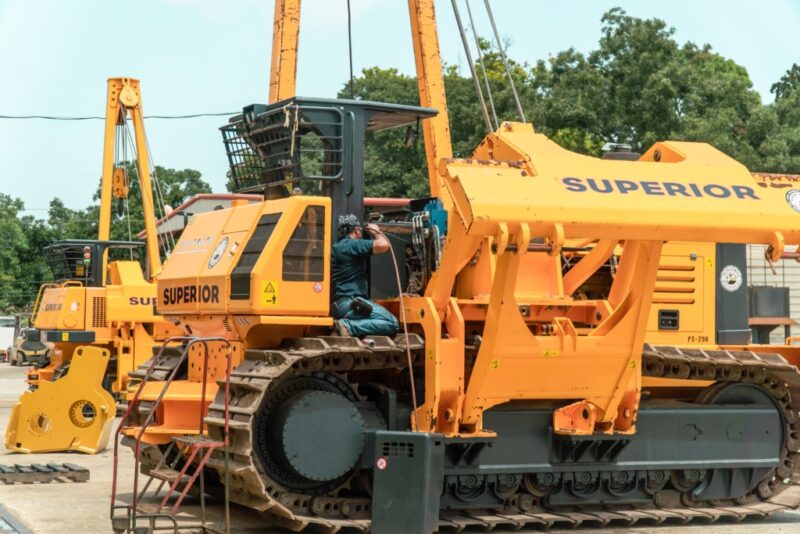In a world dominated by towering skyscrapers, sprawling factories, and ambitious infrastructure projects, the transport of heavy machinery stands as a marvel of engineering and logistics. Picture this: a colossal crane, towering above the skyline, or a monstrous excavator, rumbling into position on a construction site.
How do these behemoths, often weighing hundreds of tons, make their journey from one location to another? The process is far from straightforward; it involves intricate planning, specialized equipment, and skilled operators navigating complex regulations and challenging terrains. In this article, we will delve into the fascinating secrets behind moving these massive machines, exploring the methodologies and innovations that ensure their safe passage across landscapes, from bustling urban environments to remote job sites.
Buckle up as we uncover the hidden challenges and ingenious solutions that transform heavy equipment transport from an enigmatic process into a well-oiled operation.
Understanding Heavy Machinery

Heavy machinery encompasses a wide array of robust equipment designed to perform vital tasks in construction, mining, and industrial operations. From towering cranes that gracefully lift enormous steel beams to colossal excavators that dig deep into the earth, these machines are marvels of engineering ingenuity.
Understanding the intricacies of heavy machinery involves delving into its core components—hydraulic systems, powerful engines, and advanced control mechanisms—all working in concert to create formidable forces. Yet, what truly sets these machines apart is not just their size, but the sophisticated technology that allows them to maneuver in challenging environments.
Its a dance of power and precision; one moment theyre idle giants, and the next, they spring into action, carving out landscapes or lifting unprecedented loads, showcasing the genius behind their design and function.
Planning and Preparation

Planning and preparation are the cornerstones of transporting heavy machinery, where the faintest miscalculation can lead to monumental setbacks. First, a meticulous assessment of the machinery’s dimensions and weight is essential; understanding each curve and contour is vital.
Dimensions dictate not only the type of transport vehicle required but also the routing, as oversized loads often necessitate special permits and road closures. Collaboration with local authorities is pivotal, ensuring that traffic is managed and routes are adjusted for safety.
Beyond paperwork, there’s a need for strategic team coordination—engineers, logistics managers, and drivers must sync their movements, often rehearsing the transport plan down to the last detail. The right equipment—whether it’s flatbeds, dollies, or cranes—must be sourced and prepared, all while keeping an eye on weather conditions and potential obstacles.
In this high-stakes endeavor, every element matters, creating a complex but essential tapestry of planning that transforms the dream of moving colossal machines into a tangible reality.
Transporting Heavy Machinery

Transporting heavy machinery is a meticulous endeavor that demands both expertise and precision. Massive construction equipment, such as excavators and bulldozers, require specialized transport vehicles, often custom-made to accommodate their sheer size and weight.
The journey begins with careful planning; every angle, route, and potential obstacle is meticulously assessed to ensure safe passage. This may involve coordinating with local authorities for permits, navigating through tight urban environments, or even utilizing police escorts for particularly large models.
Once on the road, these colossal machines sway gently but surely, bound by chains and watched over by skilled operators who monitor every bump and shift. The process isn’t just about moving metal; it’s a symphony of logistics, engineering, and sometimes sheer brute force, blending the art of transport with the practicalities of engineering to deliver these behemoths to their intended destinations.
Conclusion
In conclusion, the transport of heavy machinery is a feat of engineering efficiency and precision, blending advanced technology with expert logistical planning. From the careful disassembly of oversized components to the selection of the right transportation method—be it road, rail, or water—every step is meticulously executed to ensure safety and reliability.
As industries continue to evolve and demand for heavy machinery grows, understanding the intricacies involved in machinery transport becomes increasingly essential. By harnessing innovative techniques and tools, we can continue to meet the challenges of moving these colossal machines while paving the way for future advancements in this critical sector.


